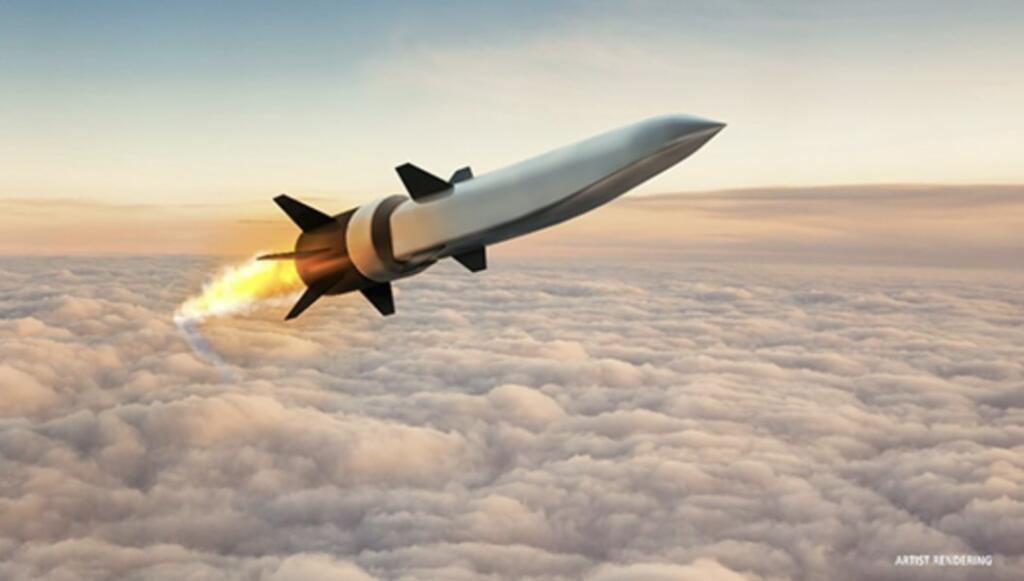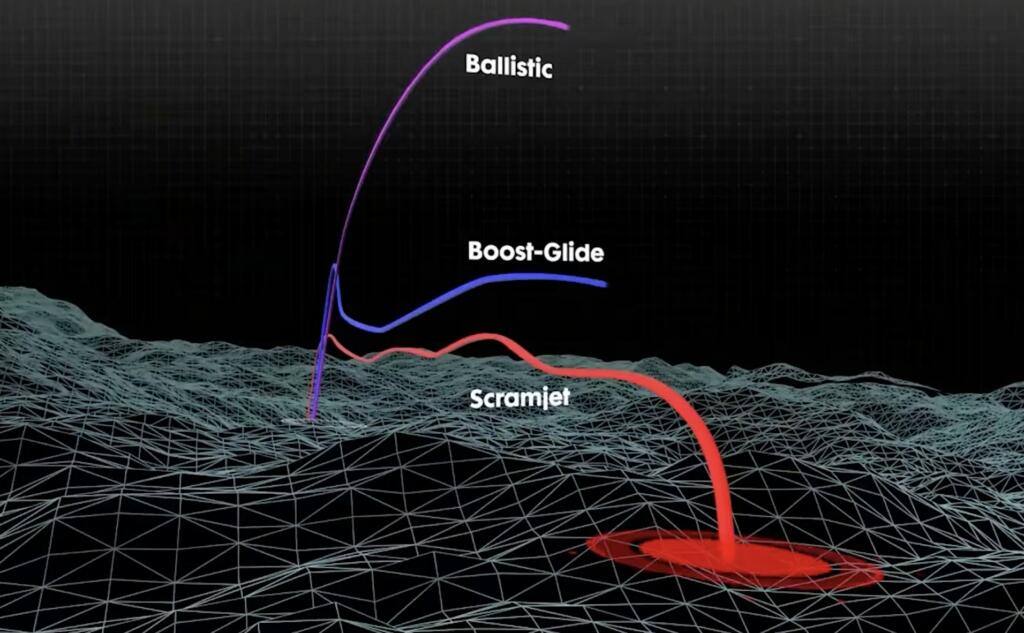The US Air Force has given the first look at the the Air Force’s Hypersonic Attack Cruise Missile. This will be a hypersonic missile with a supersonic ramjet engine that is scheduled for deployment around 2027.
Drawings of the Hypersonic Attack Cruise Missile are below.


The scramjet propelled the missile at “a speed greater than Mach 5 (over 3,700 miles per hour)”.
The first successful flight of the US HAWC was in September 2021. The existence of the test was revealed in early April 2022. Principal Director for Hypersonics Mike White stated that HAWC would be smaller than hypersonic glide vehicles and could therefore launch from a wider range of platforms. White additionally noted that HAWC could integrate seekers more easily. DARPA requested $60 million for MoHAWC, the successor program to HAWC, in FY2023. On 18 July, 2022, the third successful flight test of the HAWC was reported by DARPA – the missile was able to fly at Mach 5 (6,100 km/h; 3,800 mph) speed at the altitude of more than 60,000 ft (18 km; 11 mi) for more than 300 nautical miles (560 km; 350 mi).
On 30 January, 2023, the final successful flight test of the HAWC was reported by DARPA and Lockheed Martin – like its previous flight test, the missile was able to fly at Mach 5 (6,100 km/h; 3,800 mph) speed at the altitude of more than 60,000 ft (18 km; 11 mi) for more than 300 nautical miles (560 km; 350 mi), and demonstrated improved performances and capabilities. DARPA plans to further these technological improvements through More Opportunities with HAWC program (MOHAWC). Raytheon received an $81 million contract to work on the More Opportunities with the Hypersonic Air-breathing Weapon Concept, or MoHAWC, program.
Technology developed for the HAWC demonstrator was used to influence the design of the Hypersonic Attack Cruise Missile (HACM), a U.S. Air Force Program of Record to create a scramjet-powered hypersonic missile it could deploy as an operational weapon. The contract to develop HACM further was awarded to Raytheon in September 2022. HACM will use a Northrop Grumman scramjet. Raytheon is the prime contractor for HACM and received a $985 million contract from the Air Force in September, 2022. The HACM is an air-launched standoff weapon that can hit high-value targets in contested environments. It has a range of 500 km and is capable of Mach 7.
Russia and China have hypersonic missiles in operation but these are more maneuverable warheads for ballastic rockets. They are boosted by rockets and then have unpowered gliding. The US has shown hypersonic missiles with actual supersonic engines. Supersonic ramjet engines only work at speeds over three times the speed of sound. Hypersonic weapons are ones that operate at five times the speed of sound or faster. Chemical rockets can operate at any speed up to about 46 times the speed of sound (36000 mph).
The USA has used updated software on the decades old weapon system, Patriot anti-missiles. The updated software allowed the Patriot missiles to destroy a Russian Kinzhal hypersonic missile. Ukraine said it shot down six Kinzhal missiles in a single night.
The Kh-47M2 Kinzhal is a Russian hypersonic air-launched ballistic missile. It has a reported range of 1,500–2,000 km (930–1,240 mi) and speed up to Mach 10. In an interview published by The Economist on 13 June 2023, the Ukrainian Patriot operators stated that the Kinzhal missiles travelled at approximately 1,240 m/s (Mach 3.6), which is about one-third of the maximum speed claimed by Russia.
A boost-glide hypersonic missile is a weapon that is launched by a rocket booster and then glides long distances without propulsion.
The missile is designed to avoid existing missile defense systems by:
Continually maneuvering
Flying at lower altitudes to reduce warning time
Hypersonic glide vehicles include:
China’s Dongfeng-17
Russia’s Avangard
The U.S. Navy’s Conventional Prompt Strike system
The AGM-183 ARRW, developed by Lockheed Martin
The U.S. Department of Defense (DOD) is pursuing two types of hypersonic weapons technologies:
Boost-glide systems
Cruise missiles that would use high-speed, air-breathing engines known as scramjets.
The scramjet powered hypersonic missile would be able to make more radical and less predictable moves. It could fly lower and maintain speed and increase speed after being fired.



Brian Wang is a Futurist Thought Leader and a popular Science blogger with 1 million readers per month. His blog Nextbigfuture.com is ranked #1 Science News Blog. It covers many disruptive technology and trends including Space, Robotics, Artificial Intelligence, Medicine, Anti-aging Biotechnology, and Nanotechnology.
Known for identifying cutting edge technologies, he is currently a Co-Founder of a startup and fundraiser for high potential early-stage companies. He is the Head of Research for Allocations for deep technology investments and an Angel Investor at Space Angels.
A frequent speaker at corporations, he has been a TEDx speaker, a Singularity University speaker and guest at numerous interviews for radio and podcasts. He is open to public speaking and advising engagements.


Don’t forget DARPA is working on Glide Breaker anti-hypersonic glide vehicle weapons, which I believe are also hypersonic.
Supersonic is not limited to mach 3. The general design rule of thumb is a particular ramjet can cover 2 mach numbers, thus most supersonic ramjet missiles cover mach 1-3 with a single engine. If a missile ejects the mach 1-3 engine, or is boosted to mach 3 by a rocket, then a mach 3-5 ramjet is workable. Conventional ramjets have issues beyond mach 5 though, which is the realm of scramjets and hypersonic systems.